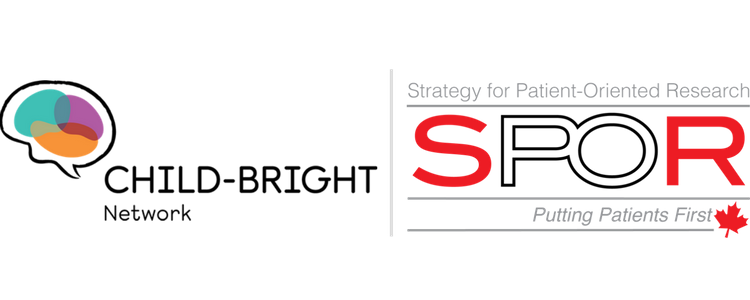We are thrilled to announce that acclaimed interdisciplinary researcher and academic Marlyn Bennett will be joining the CHILD-BRIGHT Network’s EDI-DI Program as co-lead with Nomazulu Dlamini. Marlyn’s role will be pivotal in ensuring that the principles of equity, diversity, inclusion, decolonization, and Indigenization are authentically embedded across all aspects of CHILD-BRIGHT's work, making a lasting impact on childhood disability research.
Marlyn Bennett
Faculty of Social Work and Werklund School of Education | University of Calgary
Faculty of Social Work | University of Manitoba
2023 Canada Research Chair for Indigenous Children’s Wellbeing
EDI-DI Co-Lead at the CHILD-BRIGHT Network
About Marlyn
Marlyn is Anishinaabe from the Treaty 1 community of Sandy Bay Ojibway Nation in Manitoba, Canada. She recently joined the University of Calgary’s Faculty of Social Work and Werklund School of Education as the 2023 Canada Research Chair for Indigenous Children’s Wellbeing. In addition, she remains an adjunct professor in the Faculty of Social Work at the University of Manitoba.
Marlyn’s background is layered and multidisciplinary. At 24, she went to law school with the plan of becoming a lawyer. “But I got sucked into social work,” she says with a laugh. “I also became a mother, which affected my plans.” After leaving her law degree, Marlyn sought out roles in connection with Indigenous child welfare and family services, both within and outside of academia. She worked as a policy analyst, a research assistant, and a seasonal lecturer before finally beginning a degree in social work at the University of Manitoba in 2003. She went on to complete an interdisciplinary Ph.D. in 2016.
Today, Marlyn's research is centred on the experiences of Indigenous women and youth within the child welfare system. “My focus is really on the wellbeing of Indigenous children,” says Marlyn, who went into foster care herself at age 12 after her mother’s passing.
Storytelling in health research
A strong proponent of arts-based approaches and qualitative research methodologies, Marlyn is particularly interested in how storytelling methods can be applied within Indigenous health research. One method she’s especially known for is digital storytelling: an innovative, collaborative process that combines traditional storytelling and digital technologies. Using visuals and audio, participants tell personal stories through the creation of short video clips.
“Digital storytelling is also a land-based approach,” says Marlyn. “It’s about bringing Indigenous people together in a cultural gathering, where they’re out on the land. It gives them access to their community, their Elders, the land, and each other.”
Marlyn first learned about digital storytelling in 2013, through a project organized by the University of Winnipeg’s Oral History Centre on the intergenerational effects of residential schools. Marlyn created her first digital story, My Mother’s Love Was in a Bowl of Porridge, which explores her complex relationship with her mother. The experience, she says, was truly eye-opening. “I loved it!” she says. “I loved being able to tell my story my way.” It also had a profound effect on her research: during her Ph.D., Marlyn began to use digital storytelling with former youth in care.
Screenshot of Marlyn’s digital story, My Mother’s Love Was a Bowl of Porridge.
Photovoice is another method that Marlyn applies in her work. This approach involves giving participants a camera and asking them to take photographs in response to a question. Afterwards, they’re given the opportunity to talk about the meaning behind their photos. “You get such rich detail, because people are so passionate," says Marlyn. “They want to tell their stories. It’s not intimidating to them.” She adds that photovoice participants are given food before and after the photo-taking, to create a sense of ceremony and warmth.
Highlighting Indigenous perspectives
Marlyn first became involved with CHILD-BRIGHT in 2022 when her friend and fellow researcher Lucyna Lach invited her to join the network’s Indigenous Advisory Council, which aims to guide and inform CHILD-BRIGHT's work. Lucyna was also the one who recommended Marlyn for the EDI-DI Program. “She suggested that I would be a really excellent person for the role,” says Marlyn.
When asked what she hopes to bring to the program as co-lead, Marlyn doesn’t hesitate. “I want to make sure that Indigenous Ways of Knowing and Being are considered. That we’re being mindful of the incredible diversity of Indigenous communities in this country: North to South, on reserve and off reserve.” Indigenous People, Marlyn points out, have always been here. “We’re unique. Our issues are different than those experienced by other ethnic groups in Canada. It’s important that we engage with these differences as we consider things like patient engagement and hospital care.”
“Some Indigenous people have lost connection with their communities. There’s a spectrum: those who know who they are, those who are still on the path, and those in various stages in between.”
Marlyn is also keen to explore cultural safety (i.e., when a person feels safe receiving health care). “If a person doesn’t know how to ask for services that make them feel safe, we need to teach them how to advocate for themselves,” she says. As an example, she says she would love to walk into a hospital room and smell sweetgrass.
Overall, Marlyn is passionate about bridging Indigenous and Western perspectives in health care, and she highlights the importance of recognizing the strengths in how Indigenous People see the world. “We need to see ourselves reflected in those spaces,” says Marlyn. “But better yet, we need to have services that are local to our communities.”




